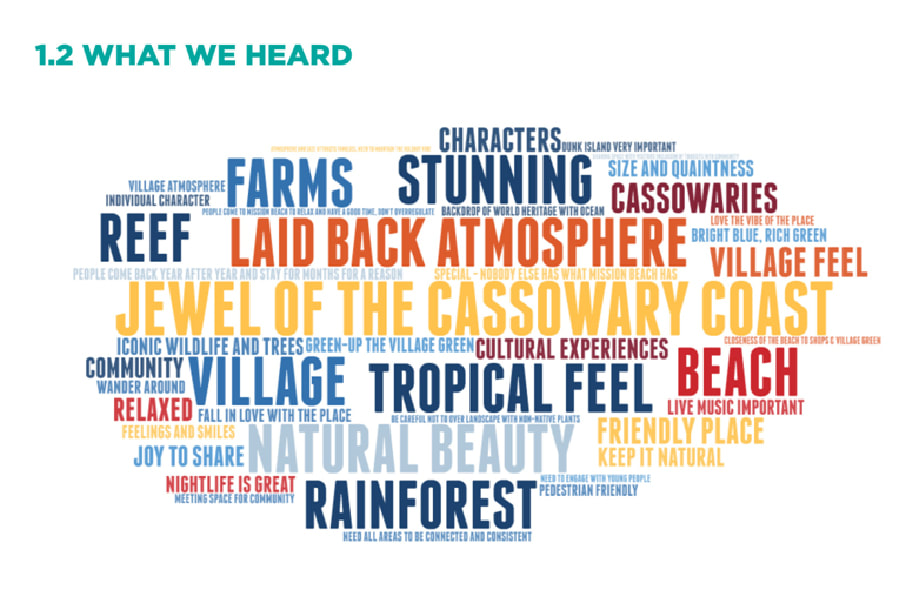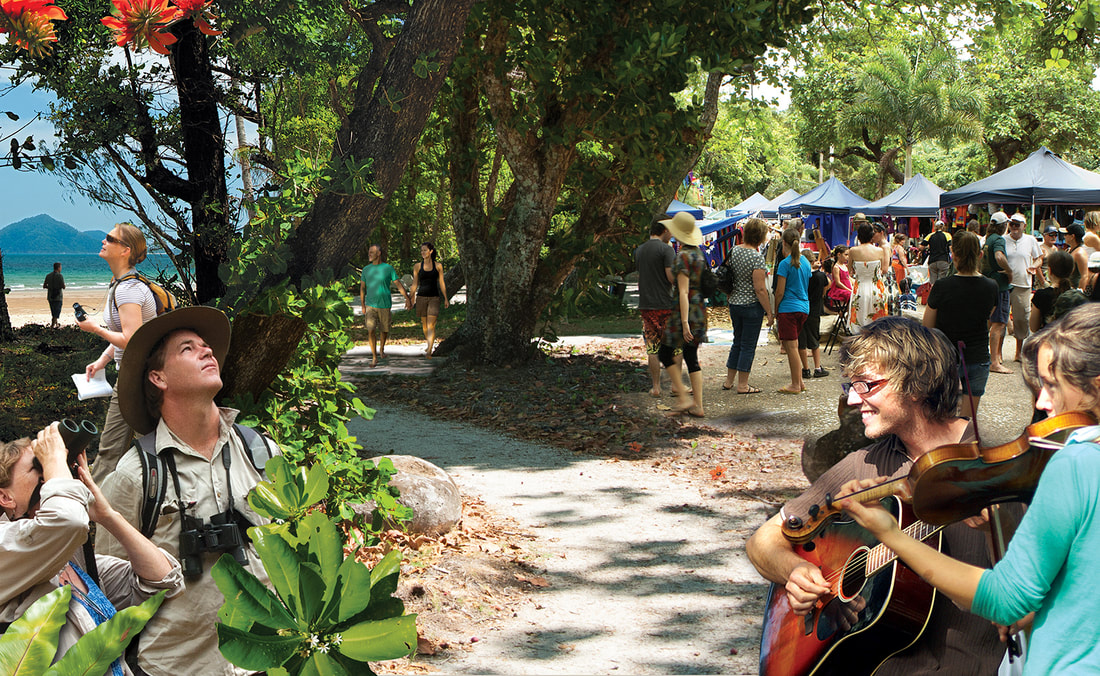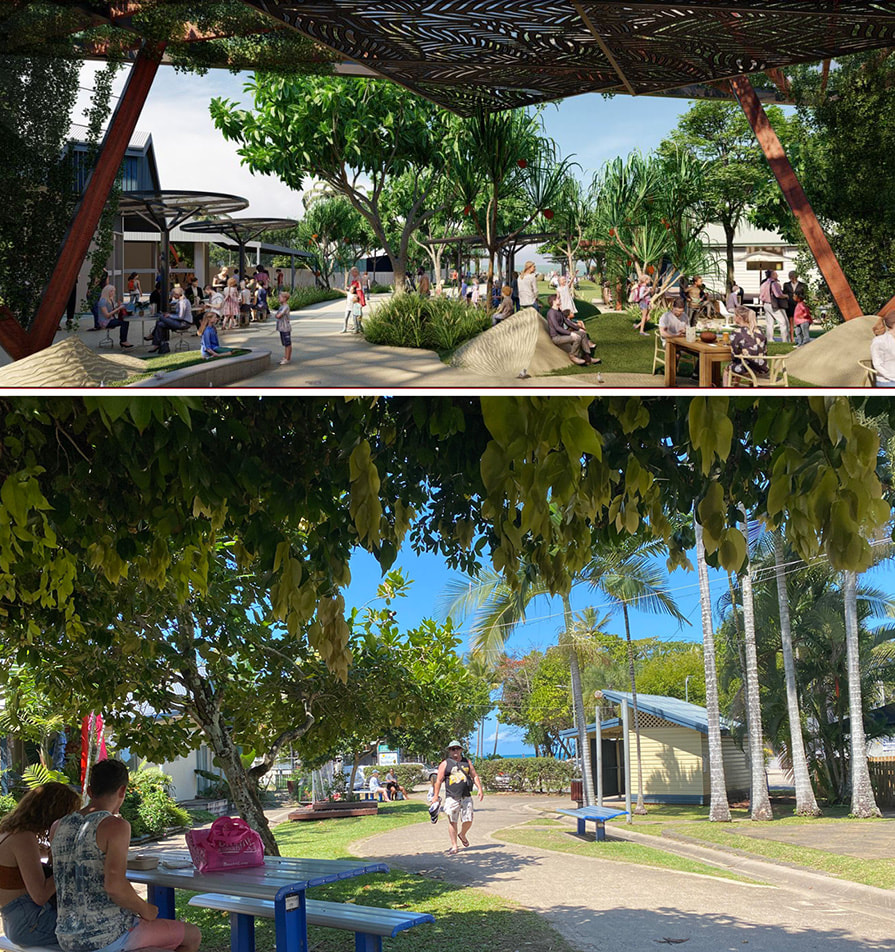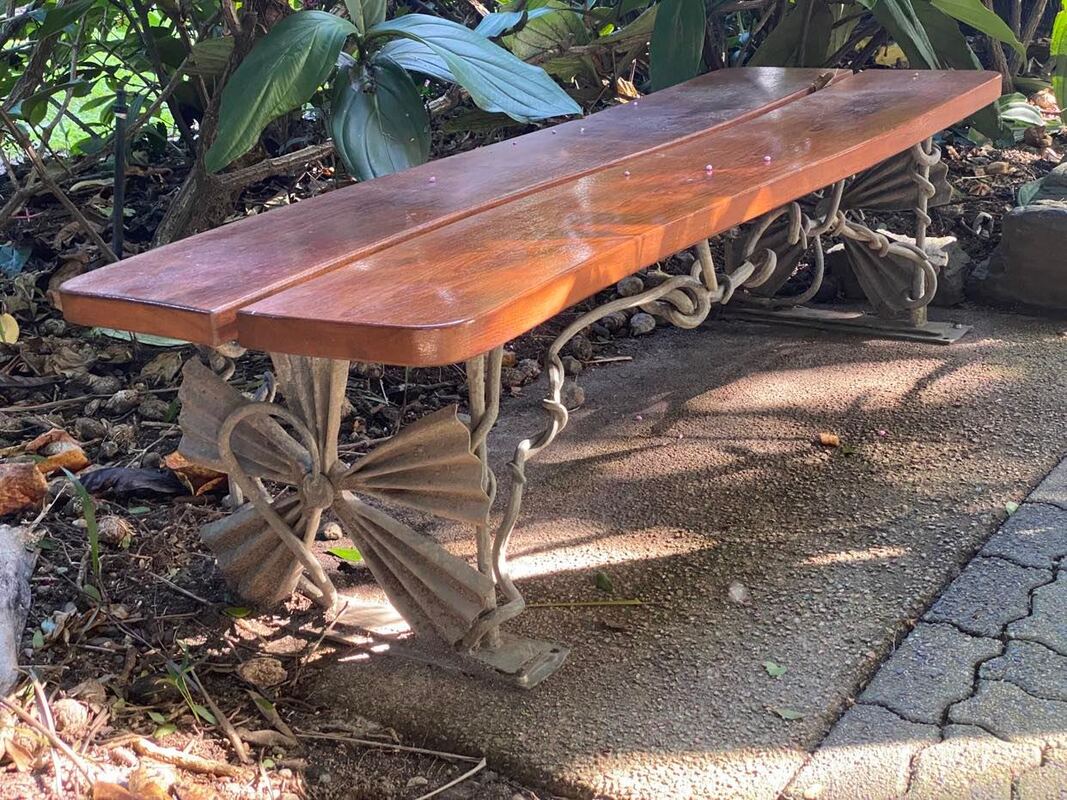The Mission Beach Village is built over the top of a waterway. The drainage system goes under Porters Promenade down the right side of the Village Green onto the beach at the end of David Street. The infrastructure has been in urgent need of repair for over ten years when holes appeared in the road at the intersection of Porters Promenade and Campbell St as drain pipes started collapsing.
| Mission Beach Master Plan In August 2018 community feedback was sought for a Master Plan for Mission Beach. The scope of the project was to be from Seaview Street to Boyett Road including the arboretum and Ulysses Park. In March 2019 'key community stakeholders' were invited to a workshop where CCRC presented the results of the feedback. Following the workshop the public was then invited to make comment through a 'have your say' on the CCRC website. The message received was unabiguous and consistent with decades of meeting and workshop outcomes on 'what makes Mission Beach special'. The local community is well aware of the special social and environmental values of Mission Beach. For the most part that is why they choose to live there. |
The key stakeholders didn't have any further involvement in the design process. Another 'stakeholder' group was formed comprising the Village Green business owners who worked exclusively with LA3, the architects contracted for the concept design.
It appears LA3 is the preferred architects for projects within the Cassowary Coast. The same business has been engaged for several other projects including the Bingil Bay Picnic Area and the Cardwell Foreshore. The standards used by LA3 do not include expertise or understanding of design within a world heritage setting where it is crucial the urban environment does not dominate the sensitive world heritage values.
Following the release of LA3's concept plan in July 2019 the then Mission Beach Tourism manager and representatives from Mission Beach Cassowaries and C4 met with CCRC Planner Byron Jones to voice their concerns the design was out of character with everything Mission Beach represents.
The draft Final Design does not reflect community vision
Funding was secured for the project in July 2022. In September a Reference Group was formed with members chosen on a merit basis to represent a cross section of the community (including Mission Beach Cassowaries). The final design has now been presented for feedback at the first meeting of the Reference Group and to the general public.
It is alarming to note the draft final design does not;
- reflect any of the discussion at the July 2019 meeting,
- recognise the unique and character defining features that underpin Mission Beach community identity and visitor appeal or;
- Reflect wider community feedback.
|
|
An example of how the same urban design and generic architectural approach can permanently change the natural amenity of a place was in 2012 with the post Cyclone Yasi upgrade of the Bingil Bay Picnic area. The original plan was rejected outright by the Bingil Bay community who had made it clear they only wanted a minor upgrade and to 'keep it natural'. The second design wasn't much better but the community were tired of waiting and "it didn't look so bad".
The final design saw the natural lay of the dune benched and concreted. The result is a hard edged stepped area where magnificent callophyllom trees now create a safety hazard by dropping their large round seeds on the concrete surface surrounding they trunks. The beach almond seeds stain the concrete requiring increased maintenance. There is now no opportunity for natural process to occur on this part of the dune. Once a vibrant community meeting place, the picnic area is no longer used by the Bingil Bay locals since it was concreted and the wooden seats replaced with metal ones.
Fast forward 10 years to the Mission Beach Town Centre Revitalisation Project. The same architect with the exact same urban approach which might look ok on a marine boulevard somewhere in Dubai, Brisbane or even Maroochydore but could not be more out of character for a place like Mission Beach.
| Bottom Line The CCRC media release gives an insight into the councils fundamental focus. The town centre upgrade would not be happening but for the failing infrastructure that is now in desperate need of repair. The CCRC makes it clear in their media release their motivation beyond drainage work is to attract investors, not a well needed uplift of our town centre, for the community and visitors. |
The concept drawings are misleading,
grossly out of scale
and not achievable.
A special place requires special consideration, not a generic hard edged 'on trend' urban design that could be anywhere.
The only special treatment required is to reflect the village character and to protect the natural environment - where the rainforest meets the sea.
The Mission Beach Village Green;
Does need;
- Rehabilitation of foreshore and beach access to repair a degaded dune and to present the natural transition between rainforest and sea.
- A more 'organic' as opposed to a hard edged 'on trend' approach to the design.
- More trees to provide natural shade (full consideration must be given to the removal and replacemnet of existing trees.
- Ground level and level lawn areas
- Hard shelters for restaurant eating area extensions
Does not need;
- A viewing deck, that permanently destroys the inegrity of the littoral zone that necessitates a concrete retaining wall in the erosion zone.
- Pseudo sand dune 'sculptures' to reflect rainforest to the sea 'theme' (Mission Beach doesn't have sand dunes and the rainforest to the sea is already there).
- Excessive use of concrete with raised areas that minimise usable area.
- Laser cut metal shade shelters
- A huge Mission Beach sign above the shops
Could have;
- Bespoke furrniture designed and made locally
- Existing trees transplanted and mature trees used in Village Green upgrade.
- A more organic/natural approach to the design including the shape of Porters Promenade
Will the architects, the marketing agents and council representatives meaningfully listen to the feedback that this design does not reflect the natural World Heritage amenity and the low key character of a village set in rainforest by the sea?
Or will we be forever left with a town centre where community members and visitors will once again ask "What part of natural was not understood?"















